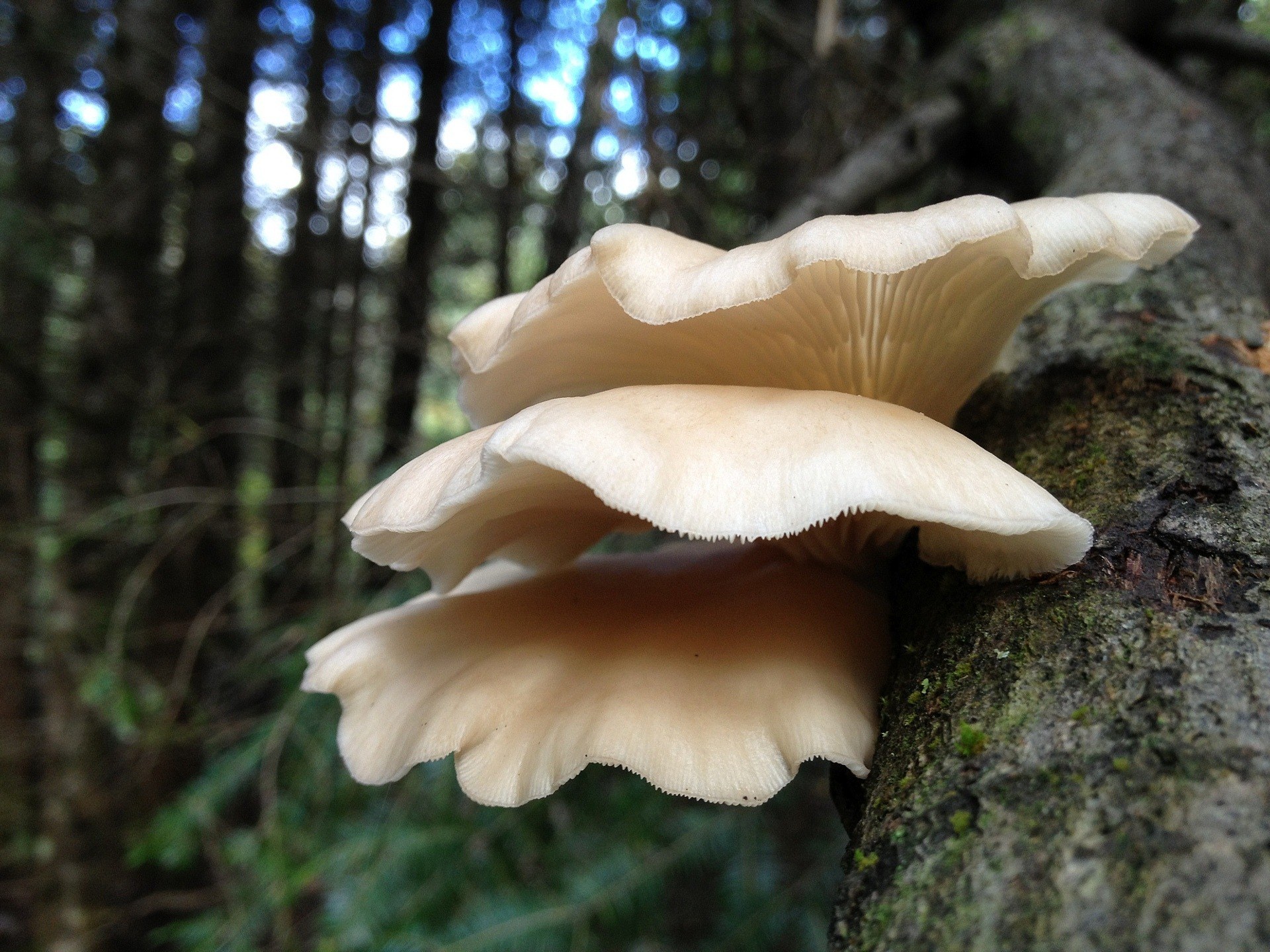Botanist Madrona Murphy and ecologist Russel Barsh celebrate Halloween by revealing some of the tastiest, strangest, and most surprising facts about local fungi at the San Juan Island Library on Friday October 21, from 7:00 to 8:30 pm, the fourth installment in this year’s Wild Side series sponsored by the Library, Kwiaht, and Wolf Hollow Wildlife Rehabilitation Center. Seasonal refreshments will be provided.
Most islanders are familiar with the tasty Chanterelles, Shaggy Manes, and Oyster Mushrooms that pop up conspicuously after the first fall rains, but Murphy says that there are dozens more species of edible fungi to be found here, many of them with exceptional flavors. She includes Lobsters, Shrimp Russulas, Bluets, Princes, and Yellow Feet on her list of favorites, along with crisp, crunchy “milk caps,” long prized in Russian cuisine, and meaty Matsutake, prized in Japan, that preserve their rich fragrance of pine resin even when cooked. Growing up on a Lopez farm, Murphy has gathered mushrooms since she could walk, and says that she continues to add more species to her basket.
Murphy says that surprisingly few fungi are dangerously poisonous. “Many are simply tasteless, unpleasantly bitter, or will give you a terribly upset stomach.” She stresses the need to learn mushroom identification from an experienced local mushroom hunter, and positively identify every mushroom you intend to eat. She also recommends that you cook wild mushrooms before eating them, and “just take a nibble” when trying a species for the first time. “Mushrooms vary a lot regionally in their chemistry and they can contain exotic chemical compounds that only affect some people badly.”
Murphy is also a spinner and knitter, and she has experimented for years with dyes made from local fungi and lichens, some of which produce rich gold, green, and brown colors in wool. She will bring examples of dyed yarns and dye mushrooms to her talk.
As a botanist, Murphy is particularly interested in the role many fungi play as partners of plants. Fungi living around the roots of plants (mycorrhizal fungi) collect water and break down decaying plant debris into nutrients that roots can absorb. Many plants reciprocate by feeding some sugar to the fungi. An old forest with undisturbed soil can have interwoven cobwebby mats of many different mycorrhizal species, just a few inches beneath the surface. New seedlings simply plug into the nutrient network. But if the soil is broken up or burnt, it can take centuries for the fungal mat to regenerate fully. Some plants simply will not grow without fungal partners, including many local orchids, as well as the islands’ iconic Red and Golden Paintbrush flowers.
“A healthy plant community necessarily includes healthy, diverse fungi,” she says, “and the best way to preserve fungal diversity is to minimize soil disturbance and large-scale, wood-fueled fires.” Old farmland is better re-cycled and improved as farmland, for example, than replaced by clearing unfarmed land. “Lawns have the poorest fungal diversity,” she adds, due to persistent tillage, pesticides, fertilizers, and the removal of dead wood and everything living that isn’t grass. “You can find the greatest variety of fungi around very old trees with deep, undisturbed soils and leaf litter.”
Insect diversity is also associated with fungal diversity. Fungi support plant communities and the leaves and flowers that feed insect communities. The relationship can go deeper, however, says Russel Barsh, who has been studying pollinator-plant associations in the islands for a number of years.
Like plants, Barsh says, fungi are eaten by a wide variety of insects, many of which lay their eggs in mushrooms or mycelia. “We are just beginning to appreciate insects’ role in dispersing fungal spores, which is analogous to insects’ pollination of flowers.” Fungi even use colors, scents and nectar-like sugar drops to attract insects. But most of the insects that help fungi reproduce are flies, ants or beetles rather than bees, and some of them “plant” fungi in their nests to convert woody debris into digestible sugars.
Although fungi are nearly invisible except for the fruiting bodies—mushrooms—that some fungi produce from time to time for reproduction, they are one of the oldest life-forms on earth, appearing at least 1.4 billion years ago. “That’s hundreds of millions of years before the first algae, and nearly a billion years before the first plants to colonize land,” Barsh says. While cyanobacteria and algae made the earth green and oxygen-rich through photosynthesis, fungi are decomposers and recyclers without which life could not continue. Buried in the soil or ocean sediments, fungi “take the long view” according to Barsh. A single individual, which can be a cottony mat beneath acres of woodland, lives for centuries and may appear as mushrooms only once or twice in a decade.
Learn more about the ecology and enjoyment of island fungi at the Library on October 21, and discover the strange and wonderful world of the mostly unseen fungal kingdom!



